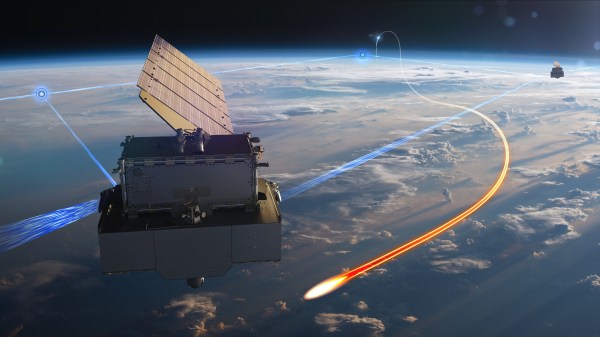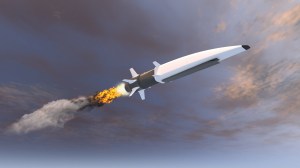SDA, SpaceX set to fly second batch of Tranche 0 satellites

The Space Development Agency is looking to keep building out the foundations for its constellation of data transport and missile tracking satellites in low-Earth orbit with the impending deployment of 13 additional satellites for Tranche 0.
The systems are now scheduled to be launched Saturday with a SpaceX Falcon 9 rocket from Vandenberg Space Force Base in California. This will be the second launch for Tranche 0. The previous one occurred in April, which saw the first 10 satellites go into orbit.
After the launch service provider scrubbed both the original launch attempt Thursday and the rescheduled one on Friday, the next opportunity for lift off will be Saturday, according to a post from SpaceX on the social media platform X, formerly known as Twitter.
Ten of the satellites from the forthcoming launch will be data transport systems made by Lockheed Martin for the Tranche 0 transport later. The remaining three — including two from SpaceX and one from York Space Systems — are for missile warning and tracking.
Tranche 0 is made up of demonstration satellites for SDA’s Proliferated Warfighter Space Architecture (PWSA), which is envisioned as a multi-layer configuration of hundreds of satellites in low-Earth orbit that offer new and augmented data transport and missile warning and tracking capabilities for the U.S. military.
“We’re looking to show that you can build out sort of a proliferated architecture that allows you to do things like tactical data links, beyond-line-of-sight targeting, and advanced missile detection and tracking,” Mike Eppolito, Tranche 0 program director, told reporters Wednesday ahead of launch. “Those are sort of the three core things that we’re looking to demonstrate on Tranche 0.”
The PWSA is considered a key piece to the Pentagon-wide effort known as Joint All-Domain Command and Control (JADC2). The new warfighting concept aims to connect all of the services’ sensors and shooters under a single network, and the SDA’s satellites are intended to enable rapid collection and transfer of critical decision-making data.
Overall, Tranche 0 will include 27 satellites on orbit. Of those, 19 systems will be in the transport layer carrying optical communications terminals, and seven will also have the Link 16 tactical data link — a capability that will be demonstrated from space for the first time, Eppolito said.
The remaining eight missile warning and tracking satellites have wide-field-of-view sensors on them that will be able to spot missiles and keep tabs on them across a wide area, he added.
SDA originally planned for 28 spacecraft on orbit, but decided to keep one tracking satellite made by York Space Systems on the ground to serve as a testbed for future capabilities, Eppolito said.
“We understand that software development and the applications that run on board are going to be a critical enabling element for PWSA. So, we believe that having that testbed on the ground will pay off for both the current tranche in terms of demonstrating things before we update the [space vehicles] on orbit,” he said. “It will also be used for future tranches in terms of learning on that satellite, which could then be applied to future tranches.”
While Tranche 0 was initially scheduled to just have two launches, SDA is now targeting a third launch in partnership with the Missile Defense Agency for the last set of four missile warning and tracking satellites made by L3Harris. A firm date has not been set, but the agency is looking to get the payloads on orbit before the end of 2023, Eppolito said.
The MDA is launching its own missile warning and tracking satellite made by L3Harris as part of the Hypersonic and Ballistic Tracking Space Sensor Program this year. Eppolito said there are advantages in launching and testing together because the payloads for MDA and SDA have different capabilities that can be used tangentially.
“The benefit of that will be that we’ll be able to see the same targets from both the MDA satellites and SDA satellites, demonstrating both the medium field-of-view and wide field-of-view tracking payloads all together on the same target,” he said.
The first 10 Tranche 0 systems already on orbit — which include eight data transport platforms manufactured by York Space Systems and two missile tracking platforms by SpaceX — have made it through checkout, but some are still working out kinks, Eppolito said. The tracking satellites have sent the first images collected from the payloads to ground stations, but the agency has run into some “policy issues” that are preventing them from conducting Link 16 tests, he said.
“From a technical standpoint, we’ve gotten through all the checkout leading up until that policy hurdle,” he said. “As soon as we get approval there, we plan to move forward with that checkout.”
Once all of Tranche 0 is in orbit and the concept proved, SDA plans to begin launching satellites that carry operational capabilities. The first Tranche 1 payloads are slated to fly in September 2024, and the agency hopes to stay on an aggressive launch schedule afterwards.






